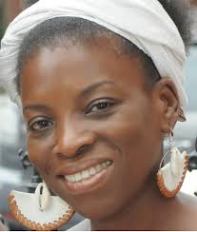This year for the first time ever, the Dream Up Festival is expanding beyond its primary venue. For the festival’s previous five years the productions were all presented at Theater for the New City (TNC). This year, seven of the 26 shows will premiere at The Producers’ Club Theaters at 358 West 44th Street.
Michael Scott-Price, curator and festival director, said that the move to the new venue was largely the result of the festival’s steady growth each year and TNC receiving many more submissions than they could possibly house. The desire to expand to a new venue has been brewing beneath the surface since the festival’s third year, but now in its sixth year TNC was ready to make the leap. After looking at neighborhoods around the city, Scott-Price says they decided to branch out from the East Village and test the public’s response in a venue in Times Square, the hub of NYC.
Scott-Price has worked as literary manager at TNC since 2005. He conceived the idea of starting the Dream Up Festival in 2009 as a solution to the growing number of shows that hoped to be staged at TNC. He wanted to get as many shows out there as possible, and the festival offered an ideal way to both get more artists’ voices heard and get the public more involved in the world of theater through quality shows at reasonable prices. He feels that with the lack of funding for the arts across the United States we need to create opportunities to showcase new artists and ideas, especially since new artistic work often receives even less attention. Thus, the Dream Up Festival focuses on new works to respond to this need and to give audiences the chance to experience never-before seen shows.
The new venue is the Crown Theater at the Producers’ Club. The Producers’ Club is a complex with a bar and lounge as well as four theaters inside. Scott-Price said they visited the spaces and chose the Crown because it had the potential to be in line with TNC as far as aesthetic, sound equipment and lighting: “We wanted to give people the comparable experience to the festival repertory conditions at TNC.” The next task was to decide which shows were best suited to this venue. The Crown has some similarities to TNC’s Cabaret Theater, which is a blackbox theater, but has mounted seating and a center aisle. Thus, the shows best suited for the Producers’ Club tend to be those that have modest settings, less reliance on props, and that are experimental or movement based. For instance, one of the shows that will be presented there, “Bubbleheads” by Darcy Heller Sternberg, envelops us in a surreal, dreamlike world where we experience the impact of divorce through the eyes of a child. These shows push theater to its limits and challenge our expectations, in line with the festival’s goal to frame our experiences in creative ways.
There are inevitably challenges that come with expanding, one of which is getting the word out about the new venue. Scott-Price is thoughtful and deliberate, and he says they aren’t going to assume anything for the future but are approaching the expansion with caution. He says they want to “do their homework on what happens with this year’s festival” so that moving forward they can make an informed decision about whether or not to continue using the Producers’ Club or even keep expanding.
In addition to the exciting expansion to the new venue, Scott-Price says Dream Up 2015 has other unique traits. He said that each year “based on the submissions, the festival organically takes on its own sense of what it will be.” He said TNC is always impressed by the variety of material they get each year and by how without having to assign a theme, the works themselves breathe life into the character of the festival. For instance, this year Scott-Price was surprised by the higher than usual number of musicals they received, as well as by the number of experimental shows that employ creative staging and props. This gives Dream Up 2015 its own feel and audiences will also contribute to this by adding their responses to and at times participation in the shows.
Scott-Price says that TNC is already planning for next year’s festival and that it has room for all types of works. For him, what is most important is to give these artists an opportunity to get their art out there. What started as the seed of an idea years ago has turned into something unstoppable, transforming art into a community experience.
By Maia Sacca-Schaeffer
Dream Up 2015 runs from August 30 to September 20, 2015 and will include plays, dance theater, solo works and interdisciplinary works. This year there will be 26 shows, including six dance theater works and four musicals.
For more information about the festival visit:
http://www.dreamupfestival.org/index.html
http://www.jsnyc.com/season/dreamup_2015/Dream_Up_General_Info.htm








